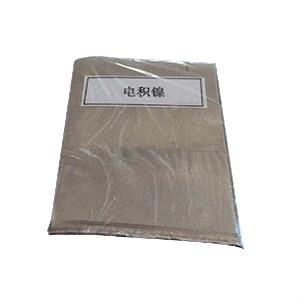Interference of pH Value of Electroless Nickel Plating Additives on Processing
Electroless nickel plating additives have the main effect in nickel plating treatment, and it is necessary to master a little of its function and increase the process to help the quality of nickel plating. There are many functions of electroless nickel plating additives, and today I will mainly talk about it. Interference of pH value of electroless nickel additives on processing.
Hydrogen ion is one of the equipment reflected in electroless nickel plating. Electroless nickel plating is a process in which the concentration of hydrogen ions in the plating solution rises again. Although the plating solution contains a large amount of buffers, it is still necessary to continuously participate in the pH adjustment agent, that is, participate in the pH adjustment. Alkali can maintain the pH value of the plating solution. Since the pH value has serious interference to the electroless nickel plating process, the control problem of the pH value of the plating solution should be paid great attention in the electroless nickel plating operation process.
Different electroless nickel plating solutions have different pHs and are suitable for scale use. For example, the pH value of acidic sodium hypophosphite plating solutions is mostly in the middle of 4.2-5.0, and low phosphorus electroless nickel plating solutions are nearly neutral; while 2 methyl boron The electroless nickel plating with alkane as the reducing agent can be used in a neutral or acidic scale, etc. A smooth equipment electroless nickel plating solution should be an optimized system based on sufficient research and development and careful calculation, and they all point out the use of its pH value. Scale and typical values.
In general, the higher the pH, the faster the plating rate, and the higher the pH, the lower the phosphorus content. Many people think that the good performance of electroless nickel plating solution is marked by the wide use of scale. Indeed, different electroless plating solutions The sensitivity of the pH value is different. Compared with the use of a plating solution that requires strict tube bundles for its main parameters, the staff warmly welcomes the use of a plating solution that can produce consistent quality at a wide range of pH values. However, the effect of the plating solution on the pH value of the plating layer is quite large, so that the pH value control scale of the plating solution in modern equipment with advanced technology is very small, generally controlled within ±0.2 of the typical value.


